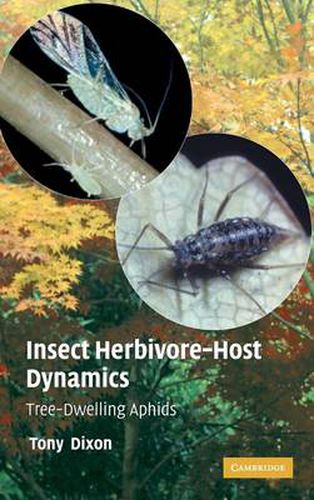Readings Newsletter
Become a Readings Member to make your shopping experience even easier.
Sign in or sign up for free!
You’re not far away from qualifying for FREE standard shipping within Australia
You’ve qualified for FREE standard shipping within Australia
The cart is loading…






Literature currently available on the population dynamics of insect herbivores tends to favour top-down regulation of abundance by the action of natural enemies. This unique volume challenges this paradigm and shows that tree dwelling species of aphids, through competition for resources, regulate their own abundance. The biology of tree dwelling aphids is examined, particularly their adaptation to the seasonal development of their host plants. When host plant quality is favourable aphids, by telescoping generations, can achieve prodigious rates of increase, which their natural enemies are unable to match. Using analyses from long-term population studies and experiments, this book introduces students and research workers to insect herbivore-host dynamics using the interaction between aphids and trees as a model.
$9.00 standard shipping within Australia
FREE standard shipping within Australia for orders over $100.00
Express & International shipping calculated at checkout
Stock availability can be subject to change without notice. We recommend calling the shop or contacting our online team to check availability of low stock items. Please see our Shopping Online page for more details.
Literature currently available on the population dynamics of insect herbivores tends to favour top-down regulation of abundance by the action of natural enemies. This unique volume challenges this paradigm and shows that tree dwelling species of aphids, through competition for resources, regulate their own abundance. The biology of tree dwelling aphids is examined, particularly their adaptation to the seasonal development of their host plants. When host plant quality is favourable aphids, by telescoping generations, can achieve prodigious rates of increase, which their natural enemies are unable to match. Using analyses from long-term population studies and experiments, this book introduces students and research workers to insect herbivore-host dynamics using the interaction between aphids and trees as a model.